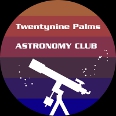Telescope Advice
Thinking about Buying a Telescope?
Buying a first telescope can be a frustrating and complicated process. With the right guidance, we can direct
and advise you on a telescope that will fit the needs for you and your family to enjoy.
The first thing to note is that you will have to spend at least $600 on a telescope that will work properly.
Telescopes priced less than that are commonly regarded as cheap toys and will only be frustrating to use and will
quickly be tossed in the garage and never used again.
Over the years, our astronomers have used many telescope types from a variety of manufacturers and have formed
solid opinions on optical quality and durability of the mount, tripod, ota and reliability of the electronics. In terms of telescope manufacturers,
stick to the big three for first time telescopes: Celestron, Meade, and Orion.
A second item to consider is whether or not to get a computerized telescope with a goto system. A computer system
will easily double the price of a manually-operated telescope of the equivalent size. Manually-operated telescopes - such
as a dobsonian, will get you far more telescope for the price, but you must know where in the sky to point it.
A Goto telescope will find things for you and may be easier to use for new astronomers, but are far more expensive.
However, learning the constellations, the sky, and how to star-hop with a dobsonian will teach you more about the night sky, and in the
long run, you will enjoy the hobby much more with added appreciation.
I must also briefly discuss eyepieces and finders. All these telescopes should come with at least one eyepiece, however the quality of that eyepiece
will not be high. An eyepiece dictates the quality of the view you will receive through your telescope. While the eyepiece provided may
be sufficient at first, investing in a quality eyepiece will greatly enhance your viewing experience. If you could only buy one, the single eyepiece
that we highly recommend would be the Televue 19mm Panoptic. This one of the best eyepieces available on the market and will work with any
of the telescopes listed below. It is not a cheap eyepiece and runs around $250. It is of the upmost quality, and being a mid-power eyepiece,
it will make nearly any object look great; moon, planets and deep sky alike.
New telescopes may also come with a small finder scope or red
dot finder that assists you in navigating the telescope around the night sky. These finder scopes are of varying quality and are often too small. An
optical finder such as 8x40 or 9x50 is recommended. Even more important than an optical finder is a reflex finder (zero-power sight finder). The "red dot"
finder supplied with many new telescopes should be immediately discarded and replaced with a Telrad finder. A Telrad finder may be the most useful accessory
one can buy for a telescope - highly recommended!
Table Top Telescopes (manually-operated):
These are great for astronomy newbies and small kids just wanting to get their feet wet. The Orion Starblast series are of
high optical and built quality. The 4.5" is pretty small for adults but great for small children. The 6"
is one the best all-around first telescopes we can recommend for all ages.
Traditional Dobsonian Telescopes (manually-operated):
These telescopes are for the more ambitious beginner. You will receive more telescope for your dollar than the other types.
They are heavier and more bulky than the table top models.
You will also have to know where in the sky you are pointing it in order to get the most enjoyment out of it - be prepared to spend some time learning the night sky. If you are serious
about astronomy, this might be the place to start.
Computerized Goto: These telescopes are the most expensive of any on this list, only because of one trait - the computer finds all of the objects for you. If you are looking
for instant gratification and you have a little extra cash to spend, perhaps these telescopes are worth your money.
These Celestron NexStars are a variation of reflecting telescopes, called a Schmidt-Cassegrain (Maksutov-Cassegrain in the case of the 4SE). Avoid the NexStar SLT, GT and
Evolution lines. They are either of lesser quality or full of unnecessary gimmicks. Stick to the SE or AVX series.
If you have any questions about a specific telescope you are looking into, feel free to send us an email at: 29palmsastronomy@gmail.com.







